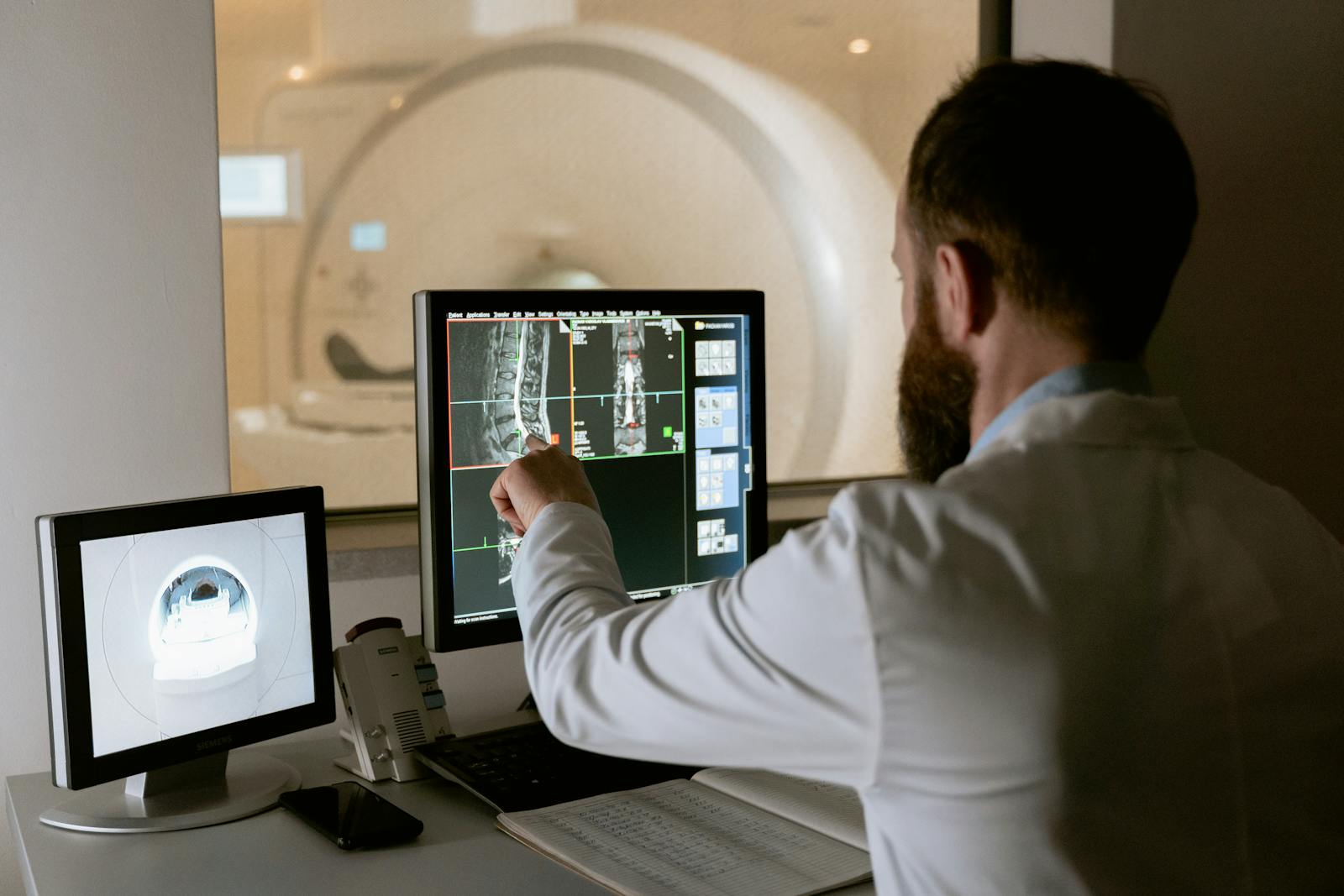The incidence of sports-related spine injuries is increasingly becoming a concern among athletes, healthcare professionals, and sports authorities. These injuries can not only disrupt an athlete’s career but also have a substantial impact on their quality of life. The discussion on prevention and treatment strategies for these injuries is therefore, of paramount importance. It encompasses a wide range of aspects, from understanding the mechanism of these injuries to the implementation of preventive measures and exploring effective treatment options. But how do we tailor these strategies to individual sports and athletes? And what role does rehabilitation play in returning to sports safely?
Understanding Sports-Related Spine Injuries
To understand sports-related spine injuries, one must explore the nuanced interplay between athletic activities and the vertebral column’s structural integrity. Delving into spinal anatomy basics, the vertebral column comprises 33 individual bones stacked one on top of another, providing support to stand upright and protect the spinal cord. The intricate design enables a range of motion while maintaining strength and stability.
However, the complex structure also introduces a multitude of injury risk factors in athletes. The spine, while robust, is susceptible to stress, strain, and direct impact. Engaging in regular, intense, repetitive, and high-impact sports activities can lead to wear and tear, overuse injuries, and acute trauma to the spine.
Additionally, individual factors such as age, physical conditioning, and previous injuries play a crucial role in the risk profile. The younger athletes with immature skeletons, the older ones with degenerative changes, and those with inadequate conditioning or prior spinal injuries are particularly vulnerable.
Common Causes in Different Sports
In examining the correlation between specific sports and their associated spinal injuries, it becomes evident that each sport has unique risk factors and common causes. For example, contact sports such as football and rugby often lead to severe spinal injuries due to high-impact collisions. Spinal injury statistics reflect this, with these sports accounting for a significant proportion of all sport-related spinal injuries.
Conversely, non-contact sports, such as gymnastics and diving, present a different risk profile. Here, the cause of spinal injuries often lies in the execution of complex, high-velocity movements, which, if performed incorrectly, can lead to falls and consequent injuries.
The role of protective gear in preventing spinal injuries is paramount across all sports. In contact sports, well-fitted helmets, shoulder pads, and spinal protectors can mitigate the risk of high-impact collisions. In non-contact sports, the correct use of mats and trained spotting can reduce the chance of injury during falls.
Recognizing Symptoms Early
Early recognition of symptoms in sports-related spine injuries is an essential step towards effective treatment and prevention of long-term complications. This includes not only identifying initial signs but also understanding chronic presentations that may point to an underlying spinal problem. We will discuss the discernment of these symptoms and the importance of their early detection in the context of sports-related spinal injuries.
Identifying Initial Symptoms
As an athlete, identifying the initial symptoms of a sports-related spine injury can greatly enhance prognosis and decrease the risk of long-term damage. These symptoms often manifest as acute, localized pain or discomfort in the neck, back, or lower spine. While pain management strategies can provide temporary relief, it’s important to avoid dismissing these symptoms as mere muscle strain or fatigue. Importantly, the psychological impact of such injuries can also be significant, inducing stress or fear that may further exacerbate the physical discomfort. It’s vital to address these symptoms promptly, seeking professional medical advice to determine the severity of the injury. This early intervention can facilitate a more effective treatment plan and potentially prevent further complications.
Understanding Chronic Signs
Recognizing chronic signs of sports-related spine injuries requires an understanding of symptoms that persist beyond the acute phase, an essential step in early detection and intervention. Persistent pain, despite pain management strategies, indicates the possible shift from acute to chronic injury. This chronic pain can lead to disrupted sleep patterns, reduced physical activity, and impaired daily functioning.
The psychological impacts of chronic symptoms should not be underestimated. Athletes may experience feelings of frustration, anxiety, and depression. Persistent pain can also lead to fear of re-injury, influencing an athlete’s willingness to return to sport. Hence, early recognition of these chronic signs is critical in preventing prolonged suffering, guiding appropriate treatment strategies, and promoting a safe return to sport.
Importance of Proper Warm-Up
The essential role of a proper warm-up regimen in mitigating the risk of sports-related spine injuries cannot be overstated. Misconceptions about warm-up routines and the role of equipment often lead to inadequate preparation and increased susceptibility to injuries.
Some common warm-up misconceptions include the belief that a short, quick routine is sufficient, or that warm-ups aren’t necessary for all types of physical activity. These misunderstandings can result in improperly prepared muscles and ligaments, increasing the risk of strain or injury.
The role of equipment in warm-ups is also often misunderstood. While equipment can be beneficial, it is not a substitute for proper warming up. The main purpose of warm-ups is to increase body temperature, stimulate blood flow, and prepare the muscles for the coming physical stress.
The importance of a proper warm-up regimen extends beyond injury prevention. It also:
* Enhances performance by preparing the body for physical activity
* Increases flexibility and range of motion, reducing the risk of overextension
* Promotes better body awareness, helping athletes avoid risky movements that could lead to spine injuries
Understanding and implementing a proper warm-up routine is a fundamental aspect of protecting the spine in sports.

Effective Stretching Techniques
Effective stretching techniques play an important role in the prevention of spine injuries in sports, contributing to flexibility, mobility, and overall athletic performance. However, common mistakes in stretching can inadvertently lead to injury, underscoring the need for correct method implementation. This segment will focus on the benefits of proper stretching and outline the most frequent errors to avoid, providing a detailed guide to safeguarding the spine through mindful exercise practices.
Benefits of Proper Stretching
In the world of sports, grasping the advantages of proper stretching can greatly decrease the risk of spine injuries and improve overall performance. Despite prevalent stretching misconceptions, a robust understanding of stretching techniques can offer numerous flexibility benefits.
These benefits include:
- Improved Physical Performance: Proper stretching enhances muscle coordination, leading to increased agility and speed.
- Injury Prevention: By increasing the range of motion, it decreases the risk of muscle and joint injuries, particularly in the spine region.
- Muscle Recovery: Stretching promotes blood circulation, accelerating recovery after strenuous activity.
Thus, integrating effective stretching techniques into a regular routine is paramount, not only for athletes but anyone aiming for a healthy and active lifestyle. Understanding these benefits can help combat stretching misconceptions and underscore the importance of flexibility.
Common Stretching Mistakes
Despite understanding the importance of stretching, many individuals inadvertently engage in incorrect techniques, undermining their efforts and potentially increasing the risk of injury. One common mistake is the belief that pain equals progress, a flexibility misconception that often leads to overstretching dangers. Overstretching can cause microtears in the muscle, leading to inflammation, pain, and potential long-term damage. Furthermore, many people neglect the importance of warming up before stretching, resulting in decreased effectiveness and increased injury risk. It’s crucial to approach stretching with a well-informed methodology, understanding that it’s not about pushing boundaries but rather improving flexibility and mobility over time. Effective stretching techniques are integral to injury prevention and optimal performance, and should be practiced with caution and consistency.
Strength Training: A Preventative Approach
Athletes’ rigorous engagement in strength training is a proven preventative approach to reduce the risk of sports-related spine injuries. This practice is grounded in the principle of balancing workouts and understanding injury psychology.
To optimize strength training for spine injury prevention, it is essential to adopt a holistic perspective that encompasses three key elements:
- Individualized Training Program: Every athlete is unique, and a one-size-fits-all approach is unlikely to yield best results. Tailoring the training program to the athlete’s specific needs and capabilities can enhance effectiveness and minimize undue stress on the spine.
- Proper Technique: Incorrect execution can negate the benefits of strength training and even induce injuries. Ensuring proper form and technique is therefore crucial.
- Progressive Overload: Gradually increasing the intensity of workouts helps to strengthen the spine without causing sudden and excessive strain.
Essentially, strength training should be viewed as a component of a complete injury prevention strategy, alongside other interventions such as flexibility training and proper nutrition. Recognizing and addressing the mental aspects of injury – the domain of injury psychology – is also key. Fear of injury can lead to compensatory behaviors that increase injury risk, highlighting the need for psychological support in injury prevention.
Role of Nutrition in Prevention
Certainly, nutrition plays a significant role in the prevention of sports-related spine injuries, serving as a fundamental building block in the overall physical health and resilience of an athlete. A well-balanced diet rich in essential nutrients contributes to the strengthening of the musculoskeletal system, including the spine, thereby reducing the susceptibility to injuries.
In this context, the role of dietary supplements cannot be overstated. Specific supplements such as calcium, Vitamin D, and protein are vital for the maintenance of bone health and muscle mass, both of which are integral to spine health. Athletes should consider using these supplements as part of a holistic nutritional strategy, preferably under the guidance of a healthcare or fitness professional.
Hydration is another critical aspect of this prevention strategy. Adequate fluid intake ensures the effective functioning of the body’s tissues and systems. Dehydration can lead to muscle fatigue and cramps, which increase the risk of spine injuries during physical activity. Hence, athletes should maintain proper hydration levels before, during, and after their training sessions or sports events.
When to Seek Medical Attention
Recognizing the signs that warrant medical attention is a vital aspect of managing sports-related spine injuries. The diverse nature of these injuries necessitates an understanding of when to initiate emergency protocols, as timely intervention can greatly impact prognosis.
The underlying principles of injury psychology further underscore the importance of professional medical evaluation. Athletes, driven by a desire to return to play, may downplay their symptoms, risking further injury.
Key signs that necessitate immediate medical attention include:
- Inability to move or feel extremities: This could indicate a severe spinal cord injury. Immediate medical attention is essential to mitigate long-term damage.
- Severe pain or pressure in the neck, head or back: Such symptoms could suggest a potential fracture or other severe injury.
- Weakness, incoordination or paralysis in any part of the body: These symptoms can suggest neurological damage related to a spinal injury.
Modern Diagnosis Techniques
After understanding when to seek medical help, it’s important to familiarize oneself with the advanced diagnostic techniques currently employed to accurately assess sports-related spine injuries. These modern techniques leverage technological advancements in radiology and telemedicine.
Radiology advancements, such as the application of Magnetic Resonance Imaging (MRI), Computed Tomography (CT) scans, and X-rays offer detailed images of the spinal structure. These imaging techniques provide insights into the severity and specifics of the injury, which are essential for devising an appropriate treatment plan. The advent of digital radiology has further enhanced the accuracy of diagnosis, allowing for better visualization of soft tissues and skeletal structures.
Simultaneously, telemedicine diagnosis has emerged as a potent tool, especially in the wake of the ongoing pandemic. This modality facilitates remote consultation, which can expedite the diagnosis process and minimize the risk of further injury. Telemedicine uses high-definition video conferencing, which enables healthcare professionals to discuss symptoms, view radiology images, and even guide patients through certain physical examinations.
These modern diagnostic techniques represent the forefront of sports medicine, providing a higher degree of accuracy and efficiency in diagnosing sports-related spine injuries.
Navigating Through Treatment Options
Exploring treatment options for sports-related spine injuries involves a thorough understanding of available alternatives, the intricacies of surgical procedures, and the potential benefits of physical therapy. A thorough evaluation of treatment possibilities is essential to guarantee efficient recovery and prevent recurrent injuries. This assessment necessitates a balanced analysis between conservative and invasive options, with a keen focus on patient-specific needs and the overall goal of restoring peak functionality.
Evaluating Treatment Alternatives
In the domain of sports-related spine injuries, evaluating different treatment alternatives involves a comprehensive understanding of each option’s potential benefits, risks, and impacts on the athlete’s performance and recovery. It is crucial to explore alternative therapies and non-surgical treatments, which can offer significant relief with lesser risks compared to invasive procedures.
- Alternative therapies: This includes options like chiropractic care, acupuncture, and physiotherapy. These treatments can help alleviate pain, improve mobility, and speed up recovery without the need for surgery.
- Non-surgical treatments: These encompass pain management strategies such as medications, injections, and lifestyle modifications. They often serve as a first-line approach before contemplating surgical options.
- Rest and Rehabilitation: This strategy includes rest, physical therapy, and a gradual return to activity, crucial for the healing process and injury prevention.
Understanding Surgical Procedures
Exploring the domain of surgical procedures offers another set of treatment options for sports-related spine injuries, each with their specific merits, risks, and recovery timelines. Understanding these surgeries involves recognizing the inherent surgical risks, including complications like infection, nerve damage, or blood clots. Equally important is the post-operation care, which is vital for successful recovery. This may include pain management strategies, physical restrictions, and follow-up appointments with healthcare providers to monitor healing progression. It’s essential that athletes are thoroughly informed about the potential benefits and drawbacks of these procedures. This knowledge will allow them to make informed decisions about their treatment, taking into account their personal circumstances, level of sport participation, and long-term health goals.
Physical Therapy Benefits
While surgical interventions provide a viable route for treatment, physical therapy often emerges as a less invasive yet effective alternative for managing sports-related spine injuries. The benefits of physical therapy are manifold and can be tailored to each individual’s specific needs and goals through individualized therapy plans.
Some of the key benefits include:
- Posture Correction Benefits: Physical therapy can help correct posture, reducing strain on the spine and preventing further injury.
- Pain management: Physical therapists utilize techniques that help manage pain, improving the quality of life for patients.
- Improved Mobility: Through tailored exercises and stretches, physical therapy can greatly enhance mobility, enhancing an athlete’s performance and recovery speed.
In essence, physical therapy promotes healing while empowering patients with the tools needed for self-care.
Rehabilitation and Returning to Sports
Finding the path to recovery and re-entry into sports post a spine injury is a process that involves targeted rehabilitation and careful management. The strategy is twofold: physical recovery and psychological resilience, both essential to the overall restoration of function and return to sports.
Physical recovery is characterized by a structured regimen of exercises and physiotherapy sessions aimed at regaining strength, flexibility, and endurance. This rehabilitation approach is designed to help the patient regain control and functionality of the affected area.
Psychological resilience, on the other hand, is fundamental in injury acceptance and overall patient recovery. Psychological support is vital in helping athletes cope with the emotional impact of their injury, manage their expectations, and cultivate a positive and resilient mindset. Such psychological resilience, when paired with physical therapy, can help athletes overcome the fear of re-injury, a significant barrier in their path to recovery.
The decision to return to sports following a spine injury is one that should be made collaboratively by the athlete, their medical team, and their coach. It necessitates a delicate balance of physical readiness, psychological readiness, and injury acceptance, always prioritizing the athlete’s health and safety.
Frequently Asked Questions
Can Genetics Play a Role in Susceptibility to Sports-Related Spine Injuries?
Genetic testing may potentially indicate susceptibility to spine injuries, as certain genetic profiles may predispose individuals to such harm. However, more research is needed to enhance injury predictability based on genetic factors.
How Does Age Impact the Risk and Recovery From Sports-Related Spine Injuries?
Age notably influences the risk and recovery from spine injuries. An ageing spine is more prone to injuries and requires longer injury rehabilitation due to diminished physiological resilience and slower tissue repair mechanisms.
What Is the Psychological Impact of Sports-Related Spine Injuries on Athletes?
Sports-related spine injuries can greatly impact athletes’ psychological well-being. Injury Coping Mechanisms become essential, as they face anxiety, depression, and fear of re-injury. Psychological Rehabilitation is vital for holistic recovery and return to sports.
Are There Specific Exercises to Improve Spine Health for Non-Athletes?
Yes, certain exercises like Spine Strengthening Yoga can improve spine health for non-athletes. Also, understanding Office Ergonomics Impact and making necessary adjustments can prevent spine-related discomfort and improve overall spine health.
How Do Different Seasons or Weather Conditions Affect the Risk of Spine Injuries in Sports?
Seasonal and weather conditions can greatly impact sports-related spine injury risks. Injury statistics indicate that weather adaptation in training regimes is essential to mitigate these risks, particularly during colder months with icy or wet conditions.


